| Date | Text | |
|---|---|---|
11 Oct 1598
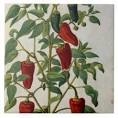
Joachim Camerarius the Younger |
death Joachim Camerarius the Younger Joachim Camerarius the Younger, German physician and botanist (born 1534) |
|
11 Oct 1677

Cornelius Vermuyden |
death Cornelius Vermuyden Sir Cornelius Vermuyden, Dutch-born drainage engineer (born 1595). |
|
11 Oct 1705

Guillaume Amontons |
death Guillaume Amontons Died 11 Oct 1705 at age 42 (born 31 Aug 1663). French physicist who developed the air thermometer - which relies on increase in volume of a gas (rather than a liquid) with temperature - and used it (1702) to measure change in temperature in terms of a proportional change in pressure. This observation led to the concept of absolute zero in the19th century. Deaf since childhood, Amontons worked on inventions for the deaf, such as the first telegraph, which relied on a telescope, light, and several stations to transmit information over large distances. Amontons' laws of friction, relied upon by engineers for 300 years, state that the frictional force on a body sliding over a surface is proportional to the load that presses them together and is also independent of the areas of the surfaces. |
|
11 Oct 1708

Ehrenfried Walter von Tschirnhaus |
death Ehrenfried Walter von Tschirnhaus Ehrenfried Walter von Tschirnhaus, German mathematician (born 1651) |
|
11 Oct 1737
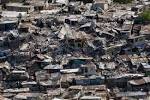
earthquake |
earthquake (geology) An earthquake in Calcutta, India is said to have caused 300,000 deaths; this is now in question: it was probably a cyclone, with deaths estimated at 3,000. |
|
11 Oct 1741
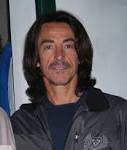
Alberto Fortis |
birth Alberto Fortis Born 11 Oct 1741; died 21 Oct 1803 at age 62. Italian geologist. |
|
11 Oct 1755

Fausto Elhuyar |
birth Fausto Elhuyar Fausto Elhuyar, Spanish chemist (died 1833). |
|
11 Oct 1758

Heinrich Olbers |
birth Heinrich Olbers Born 11 Oct 1758; died 2 Mar 1840 at age 81. Heinrich Wilhelm Matthaus Olbers was a German physician and astronomer who, while practising medicine at Bremen, calculated the orbit of the comet of 1779, discovered the minor planets (asteroids) Pallas (1802) and Vesta (1807), and discovered five comets (all but one already observed at Paris). Olbers invented a method for calculating the velocity of falling stars. He is also known for Olber's paradox which asks “why is the night sky dark if there are so many bright stars all around to light it?” |
|
11 Oct 1758

Heinrich Wilhelm Matthäus Olbers |
birth Heinrich Wilhelm Matthäus Olbers Heinrich Wilhelm Matthäus Olbers, German astronomer (died 1840) |
|
11 Oct 1799

Joseph Gillott |
birth Joseph Gillott Born 11 Oct 1799; died 5 Jan 1877 at age 77. A pioneer of the steel pen, born in Sheffield. An English engineer Bryan Donkin patented a steel pen point in 1803 but did not commercially exploit his patent. In 1830, steel makers (William Joseph Gillott, William Mitchell, James Stephen Perry) mainly in Birmingham, England developed the machine production technique for cheap long wearing steel pen nibs. Tempered steel sheet was stamped to produce the basic nib then shaped, slit and the tip formed. More than most other metals, stainless steel has the elasticity needed to give the variety of penmanship styles available from the quill pen. By 1850 quill pen usage was fading and the quality of the steel nibs had been improved by tipping them with hard alloys of iridium, rhodium and osmium. |
|
11 Oct 1809
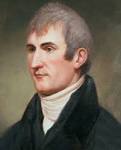
Meriwether Lewis |
death Meriwether Lewis Meriwether Lewis, American explorer (born 1774). |
|
11 Oct 1811

Steam ferryboat |
Steam ferryboat In 1811, the first steam-powered ferryboat, the Juliana, began operation by between New York City and Hoboken, NJ. Its inventor, John Stevens, designed improvements in steamboats, obtained one of the first U.S. patents (1791) and experimented on the Passaic River, (1798 - 1800), with the steamboat, Polacca, but unsuccessfully due to excessive vibrations and leaks. By 1803, Stevens had patented an improved multitubular boiler and outfitted the Little Juliana which sailed successfully in New York harbor (1804) and thus was one of the earliest twin screw sailboats. After building other ships, in 1811, he bought a commercial ferry license in NY state and operated a horse powered ferry while building the first steam ferry, Juliana. |
|
11 Oct 1844

Henry John Heinz |
birth Henry John Heinz Born 11 Oct 1844; died 14 May 1919 at age 74. American businessman who founded H.J. Heinz Co.and invented its “57 varieties” slogan was a born salesman. His entrepreneur and business genius had roots in post-Civil War Pittsburgh, where iron, steel and glass factories were forging industrial America. By age 12 he was peddling produce from the family garden. At 25, in 1869, he and a friend launched Heinz & Noble. Its first product: Henry's mother's grated horseradish, bottled in clear glass to reveal its purity. Heinz & Noble thrived until an overabundance of crops in 1875 brought bankruptcy. But Henry plunged back in, eventually building a model factory complex along the Allegheny River. By 1896, at only 52, the pickle king had become a millionaire and celebrity. |
|
11 Oct 1852

Ferdinand Gotthold Max Eisenstein |
death Ferdinand Gotthold Max Eisenstein Died 11 Oct 1852 at age 29 (born 16 Apr 1823). German mathematician whose work covered a range of topics including the theory of elliptic functions, and quadratic and cubic forms, which led to cyclotomy, the reciprocity theorem for cubic residues, and also theorems for quadratic and biquadratic residues from partition of prime numbers. |
|
11 Oct 1855
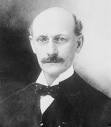
James Gayley |
birth James Gayley Born 11 Oct 1855; died 25 Feb 1920 at age 64. American metallurgist who invented a device to ensure uniform humidity in the air stream going into blast furnaces. With prior experience at several iron works, Gayley was hired by the Edgar Thomson Steel Works as Superintendent of the Blast Furnaces (1885). In this capacity was an economist, and made a record reduction in the coke consumption. He invented the bronze cooling plate for blast furnace walls, the auxiliary casting stand for Bessemer steel plants, and was the first to use the compound condensing blowing engine with the Blast Furnace. He also invented the dry-air blast, for which the Franklin Institute awarded him the Elliott Cresson medal. Gayley rose to first vice-president of the U.S.Steel Corp and acquired a large fortune. |
|
11 Oct 1865

Charles Atwood Kofoid |
birth Charles Atwood Kofoid Born 11 Oct 1865; died 30 May 1947 at age 81. American zoologist whose classification of many new species of marine protozoans helped establish systematic marine biology. Named director of the University of Illinois Biological Experiment Station in Havana, IL. (1895-1903), Kofoid investigated plankton in the river and backwater lakes. He joined the newly founded Scripps Institution of Oceanography (1903). Kofoid was a member of their scientific staff on the US Fish Commission Steamer Albatross during the Albatross Expedition (l904-5) off the coast of San Diego, CA. Two summers (1908,9), he toured the marine biological stations of Europe, buying instruments and collecting information on buildings and aquaria to help plan the San Diego Marine Biological Station. |
|
11 Oct 1871

Harriet Ann Boyd Hawes |
birth Harriet Ann Boyd Hawes Born 11 Oct 1871; died 31 Mar 1945 at age 73. American archaeologist and social activist who gained renown for her discoveries of ancient remains in Crete. She went to Crete in 1900, and with the encouragement of Arthur Evans, began to excavate a Minoan site at Kavousi where she discovered some Iron Age Tombs. From 1901-05 she led a large team that excavated the early Bronze Age Minoan town of Gournia, becoming the first woman to head a major archaeological dig. As a community of humble artisans, Gournia was of particular interest to archaeologists, complementing as it did the more elaborate palaces being unearthed at Knossos and elsewhere. In 1908 she published her monumental work on Gournia. During WW I she went to Corfu to help nurse the Serbians (1916). |
|
11 Oct 1881

Camera roll film |
Camera roll film In 1881, roll film for cameras was patented by David H. Houston, who was a Scottish immigrant that travelled to homestead in Dakota (1879) on a 400-acre farm, 30 miles NE of Fargo. His many patents ranged from a disc plow to a portable camera. George Eastman bought 21 patents on cameras from him, including the invention that made Houston famous - a portable camera designed in 1879, for which Houston received $5000 plus monthly royalties for life. This camera suited the everyday person, rather than a professional photographer's big studio camera on wheels. First sold by Eastman in 1881 for $25, the Kodak camera came loaded with a 100-exposure film that Houston would process and reload the camera for $10. Houston died a rich man in 1906. |
|
11 Oct 1881

Lewis Fry Richardson |
birth Lewis Fry Richardson Born 11 Oct 1881; died 30 Sep 1953 at age 71. British physicist and psychologist who first applied mathematics to accurate weather prediction. Richardson applied the mathematical method of finite differences to predicting the weather (1922). In his life, he held various posts: at the National Physical Laboratory, the Meteorological Office, and several university posts in physics or technology. Also, he was a chemist with National Peat Industries and in charge of the physical and chemical laboratory of the Sunbeam Lamp Co. Early application of mathematical techniques for systematically forecasting the weather were limited by extensive computation time: three months to predict weather for the next 24 hours. With electronic computers available after WW II made his methods became practical. He wrote several books applying mathematics to the causes of war. He contributed to calculus and the theory of diffusion for eddy-diffusion in the atmosphere. The Richardson number, a quantity involving gradients (change over distance) of temperature and wind velocity, is named after him. |
|
11 Oct 1884

Friedrich Bergius |
birth Friedrich Bergius Born 11 Oct 1884; died 30 Mar 1949 at age 64. Friedrich Karl Rudolf Bergius was a German chemist who invented a process to convert coal dust and hydrogen directly into gasoline and lubricating oils without isolating intermediate products (Stuttgart, 25 Jun 1921). Bergius succeeded, during distillation of coal, in forcing hydrogen under high pressure to combine chemically with the coal, transforming more carbon from the coal into oils than is possible with conventional distillation. To solve heat distribution and temperature regulation problems, Bergius invented treating a mixture of pulverized coal in oil with the gas under high pressure. For his work in developing the chemical high pressure hydrogenation method necessary for this process he shared the 1931 Nobel Prize for Chemistry with Carl Bosch of Germany. |
|
11 Oct 1887

Adding machine |
Adding machine In 1887, a patent for the adding machine was granted to Dorr Eugene Felt of Chicago, Illinois. His Comptometer was the first practical key-driven calculator with sufficient speed, reliablility and economic benefit. He called his original prototype the "Macaroni box", a rough model that Felt created over the year-end holidays in 1884-85. The casing was a grocery macaroni box, assembled with a jackknife using meat skewers as keys, staples as key guides and elastic bands for springs. Door improved his design, producing his earliest commercial wooden-box Comptometer from 1887 thru 1903, leading to the first steel case Model A (1904 that would be standard for the remainder for all "shoebox" models. Electric motor drive was introduced in the 1920's. |
|
11 Oct 1889

James Prescott Joule |
death James Prescott Joule Died 11 Oct 1889 at age 70 (born 24 Dec 1818). English physicist who established that the various forms of energy - mechanical, electrical, and heat - are basically the same and can be changed, one into another. Thus he formed the basis of the law of conservation of energy, the first law of thermodynamics. He discovered (1840) the relationship between electric current, resistance, and the amount of heat produced. In 1849 he devised the kinetic theory of gases, and a year later announced the mechanical equivalent of heat. Later, with William Thomson (Lord Kelvin), he discovered the Joule-Thomson effect. The SI unit of energy or work , the joule (symbol J), is named after him. It is defined as the work done when a force of 1 newton moves a distance of 1 metre in the direction of the force. |
|
11 Oct 1889

James Joule |
death James Joule James Joule (born 1818), English physicist. |
|
11 Oct 1892
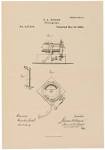
Edison patent |
Edison patent In 1892, Thomas A. Edison was issued a patent for an "Electrical Depositing-Meter" (U.S. No. 484,183). |
|
11 Oct 1910

Heinrich Caro |
death Heinrich Caro Died 11 Oct 1910 at age 76 (born 13 Feb 1834). German chemist who invented new industrial chemical processes that enabled the German company BASF (Badische Anilin und Soda Fabrik) to become the leading manufacturer of synthetic dyestuffs for two decades from 1869. Before joining them (1866), he benefitted from time he spent in England, working on mauveine (the first synthetic dye) and learning about the new synthetic dyes William Perkins had developed. Caro improved upon those methods of synthesis. Caro propelled the rise of the German dye industry, which led to Germany’s wider dominance in industrial chemistry, and the emergence of the industrial research laboratory. He helped synthesize artificial alizarin (a natural dye), discovered methylene blue (1877), the first acidic azo dye (1878), and the powerful oxidizing agent, Caro's acid, H2SO5 (1898). |
|
11 Oct 1910
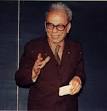
Cahit Arf |
birth Cahit Arf Cahit Arf (died 1997), mathematician. |
|
11 Oct 1915

Jean Henri Fabre |
death Jean Henri Fabre Died 11 Oct 1915 at age 91 (born 22 Dec 1823). French entomologist and author who popularized insect natural history. He wrote ten volumes of Souvenirs entomologiques (1879-1907) in which he recorded his perceptive field observations of insect behaviour. Although his career began as a professor of physics, and in 1866 he isolated alizarin (the colouring agent in madder), his life work became the study of insects, about which he wrote in elegant prose. From his study of parasitic wasps he deduced that much of the wasp's behaviour is inherited and not learned. Victor Hugo dubbed him “the insects' Homer” and Edmond Rostand named him the “Virgil of insects.” Darwin cited him as “an incomparable observer.” |
|
11 Oct 1938
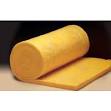
Glass wool |
Glass wool In 1938, R. Games Slayter (died 15 Oct 1964) and John H. Thomas patent glass wool and the machinery to make it. Games Slayter, the driving force behind Owens Corning technology and innovation, sought to make a finer glass fiber material. In 1932, Dale Kleist, a young researcher under Jack Thomas (Slayter's research assistant), working on an unrelated experiment accidentally caused a jet of compressed air to strike a stream of molten glass, resulting in fine glass fibers. By Fall 1932, Kleist refined the process by using steam, to make glass fiber material thin enough for commercial fiber glass insulation. From March 1933, Games Slayter directed Jack Thomas in experiments using glass wool, instead of natural or other synthetic fibers, on textile machinery. |
|
11 Oct 1940

Vito Volterra |
death Vito Volterra Died 11 Oct 1940 at age 80 (born 3 May 1860). Italian mathematician who made important contributions to calculus, and mathematical theories in astronomy, elasticity and biometrics. His mathematical talent appeared as a young boy. In 1905, he began to develop the theory of dislocations in crystals that led to improved understanding of the behaviour of ductile materials. During WWI he established the Italian Office of War Inventions and designed weapons for use by airships, for which he proposed the use of helium instead of flammable hydrogen. He is remembered for achievements in function theory and differential equations. In biology, in 1925, he formulated a pair of differential equations relating populations of prey and predators (also independently proposed by Alfred J. Lotka in 1925). |
|
11 Oct 1950

field-sequential color system |
field-sequential color system (technology) A field-sequential color system developed by Hungarian American engineer Dr. Peter Goldmark becomes the first color television system to be adopted for commercial use (by CBS in the United States), but is abandoned a year later. |
|
11 Oct 1957

Jodrell Bank |
Jodrell Bank In 1957, the Jodrell Bank radio telescope, the world's largest radio telescope, designed by Sir Bernard Lovell, began operating. Though the telescope is popularly known for tracking and communicating with man-made satellites, its prime function is the study of the universe by means of radio waves emitted by distatant stars. The radiation received from meteors, the moon, the Andromeda Galaxy, and the Milky Way offers new information daily about the origins of life on this planet and the possibilities of life on other worlds. The building of the telescope was fraught with mishaps and frustrations—financial, political, and otherwise—yet, through his perseverance, Sir Bernard Lovell made its creation a reality. |
|
11 Oct 1958
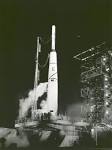
Pioneer 1 launch |
Pioneer 1 launch In 1958, the lunar probe Pioneer 1 was launched atop a Thor-Able rocket, from the Eastern Test range (now the Kennedy Space Center). Its intended mission was to reach the moon, but it failed to go as far as planned and fell back to Earth. It transmitted 43 hours of data before burning up in the atmosphere. NASA (the National Aeronautics and Space Administration) had just been formed at the beginning of the month. |
|
11 Oct 1962
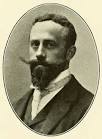
Erich Tschermak von Seysenegg |
death Erich Tschermak von Seysenegg Died 11 Oct 1962 at age 90 (born 12 Nov 1871). Austrian agronomist who was one of three scientists who independently (as did Hugo de Vries and Carl Correns) rediscovered Gregor Mendel's work on the laws of genetics of the 1860's. Von Tschermak published his findings in June 1900. |
|
11 Oct 1965
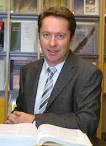
Juan Ignacio Cirac Sasturain |
birth Juan Ignacio Cirac Sasturain Juan Ignacio Cirac Sasturain, Spanish physicist. |
|
11 Oct 1968
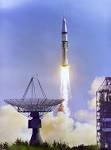
Apollo 7 launch |
Apollo 7 launch In 1968, the first manned Apollo mission, Apollo 7, was launched on a Saturn 1-B rocket from Cape Kennedy. The astronauts onboard were the Captain Wally Schirra, Jr. (Navy), with crew members Donn Fulton Eisele (Air Force) and R. Walter Cunningham (civilian). They circled for 11 days, up to 183 miles above the Earth, in 90 minute orbits. They tested maneuvering the Apollo, first by detaching it from the upper stage of the rocket, Next, they turned the Apollo around to reposition its nose toward the rocket. On the subsequent Apollo 11 mission, the vehicle would link to the moon landing craft carried inside the cylinder. For Apollo 11, the stage would then boost the combined crafts towards the moon. |
|
11 Oct 1968
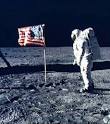
Apollo program |
Apollo program (space exploration) Apollo program: NASA launches Apollo 7, the first manned Apollo mission, with astronauts Wally Schirra, Donn Fulton Eisele and R. Walter Cunningham aboard. Goals for the mission include the first live television broadcast from orbit and testing the lunar module docking maneuver. |
|
11 Oct 1983

Telephone |
Telephone In 1983, the last hand-cranked (magneto) telephones in the United States went out of service as 440 telephone customers in Bryant Pond, Maine, were switched to direct-dial service. Prior to that time a resident's number could be as short as 33. Those living close enough to the telephone office might get to answer the phone, even if they were outside because the operator could just yell out the window! The last hand-cranked telphone call in Bryant pond was made the following day, on 12 Oct 1983. |
|
11 Oct 1989

M. King Hubbert |
death M. King Hubbert M. King Hubbert (born 1903), geophysicist. |
|
11 Oct 1994
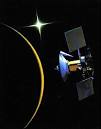
Magellan ends mission |
Magellan ends mission In 1994, the space probe Magellan ended its mission to explore Venus when flight controllers lowered its orbit into Venus' dense atmosphere and it plunged toward the surface. Radio contact was lost the next day. Although much of Magellan was vaporized, some sections are thought to have hit the planet's surface intact. Launched 4 May 1989 in the cargo bay with the STS-30 Space Shuttle Atlantis mission, Magellan arrived at its planned polar orbit around Venus on 10 Aug 1990. As it circled once every 3-hr 15-min, the planet rotated slowly beneath it, and Magellan had collected radar images of the surface in strips about 17-28 km (10-17 mi) wide and radioed back the information on the large shield volcanoes, vast lava plains and sparse craters. |
|
11 Oct 1995

Ozone layer |
Ozone layer In 1995, Americans Mario Molina and Sherwood Rowland, and Dutch scientist Paul Crutzen won the Nobel Prize in chemistry for their work warning that CFCs are eating away Earth's ozone layer. In 1970, Dr. Crutzen showed that nitrogen oxides are important in the natural balance of ozone in the upper atmosphere. Thus research rapidly escalated into global biogeochemical cycles. In 1974, Drs. Molina and Rowland established that there was a threat to the ozone layer from man-made chlorofluorocarbons (CFCs), such as gases then used in spray cans. More than a decade before the Antarctic ozone hole was discovered, their research stirred the international response to control the emissions of CFCs to protect the ozone layer. |
|
11 Oct 1996

Lars Valerian Ahlfors |
death Lars Valerian Ahlfors Died 11 Oct 1996 at age 89 (born 18 Apr 1907). Finnish mathematician who was awarded one of the first two Fields Medals in 1936 for his work with Riemann surfaces. He also won the Wolf Prize in 1981. |
|
11 Oct 2003

Franklyn Perring |
death Franklyn Perring Died 11 Oct 2003 at age 76 (born 1 Aug 1927). English botanist and conservationist, who was was one of the most influential botanists of his generation. He made a significant contribution to conservation as the co-author (with Max Walters) of the Atlas of the British Flora (1962), one of the most important British natural history publications of the 20th century. This compilation precisely was initiated in 1954 by the Botanical Society of the British Isles (BSBI) to record the incidence of all British flowering plants. Perring was a senior member of the team of researchers. Using a map of the country in 10 km grid squares, each square was visited, and the plants there recorded. Later, he encouraged zoologists to make similar atlases of distribution for mammals, butterflies, and other life forms. |